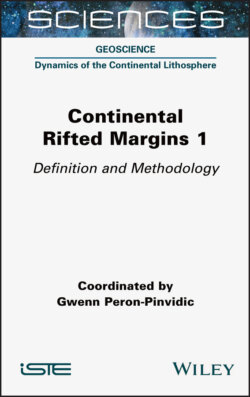Читать книгу Continental Rifted Margins 1 - Gwenn Peron-Pinvidic - Страница 20
The aulacogen case
ОглавлениеSometimes, when a region is submitted to extensional strain, three main rift axes can develop in response to the far-field plate movements. As extension continues, usually approaching breakup stage, one of the three rift axes typically fails or stops extending – this one is called the “aulacogen” (Burke 1977; Şengör and Burke 1978) (Figure 1.6). Aulacogens are often reactivated in the post-rift stages under renewed extension or compression. A well-studied example is the Benue Trough, that extends from the equatorial Atlantic Ocean into the continental hinterland of Nigeria (Figure 1.7). It formed in the Early Cretaceous as a major rift arm accommodating the separation of South America from Africa (Olade 1975; Robert 2008).
Figure 1.5. Topographic map of the East African Rift system with indication of some of the major segments, basins and structures regularly mentioned in the literature. Elevation and bathymetric map is based on the NOAA Etopo1 (source: Amante and Eakins 2009)
Figure 1.6. Schematic representation of an Aulacogen: a typically narrow intracontinental rift in a triple junction that ceased activity
Figure 1.7. Maps locating the Benue Trough aulacogen in the South Atlantic plate tectonic evolution. The maps have been created with the GPlates software (Müller et al. 2018), using the Matthews et al. (2011) sample data sets. Elevation and bathymetric map is based on the NOAA Etopo1 (source: Amante and Eakins 2009)
